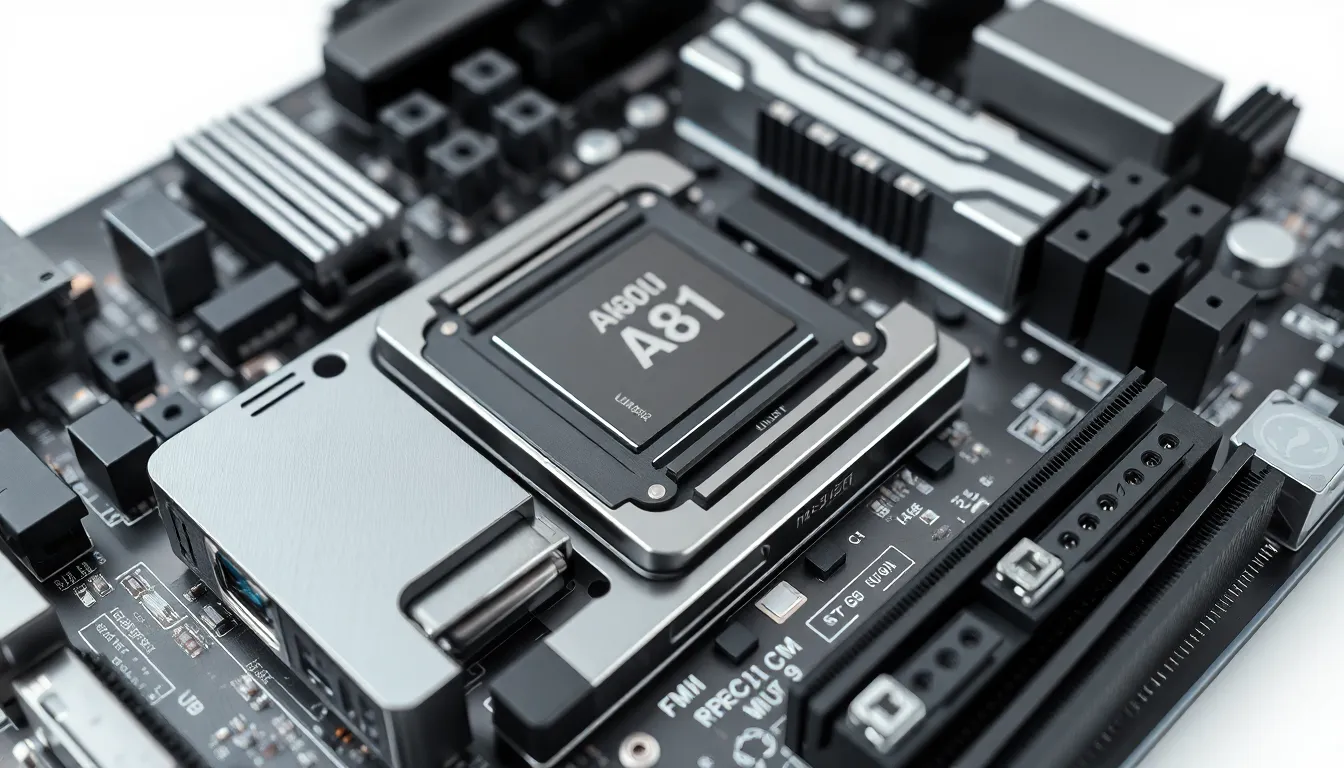Table of Contents
ToggleIn the ever-evolving world of technology, understanding product classifications can be crucial for businesses and consumers alike. The number 8474911100 refers to a specific category within the Harmonized System, which plays a vital role in international trade. This classification primarily pertains to parts and accessories for data processing machines, highlighting the importance of these components in today’s digital landscape.
As industries increasingly rely on advanced computing solutions, the significance of 8474911100 grows. From manufacturers to retailers, grasping the details of this classification can streamline operations and enhance compliance with trade regulations. Whether you’re a tech enthusiast or a business owner, diving into the intricacies of this code can unlock valuable insights into the global marketplace.
Overview of 8474911100
The Harmonized System code 8474911100 specifically categorizes parts and accessories designed for data processing machines. This classification covers essential components such as central processing units (CPUs), memory modules, and various input/output devices, ensuring proper documentation and classification in international trade.
Businesses that utilize this code facilitate the import and export of these components. Streamlining customs procedures and enhancing supply chain efficiency occur when companies accurately classify their products. Understanding 8474911100 also aids in compliance with trade regulations, as the code aligns with global standards.
In recent years, the demand for technology-driven solutions has increased significantly. Industries increasingly rely on advanced data processing capabilities, making the accurate categorization of components within 8474911100 crucial for market competitiveness. Knowing this code can provide companies and consumers with valuable insights into market trends, pricing structures, and availability of critical components.
Data processing machine manufacturers and suppliers benefit from a clear understanding of this classification. Engaging with this Harmonized System code allows stakeholders to navigate the complexities of the global marketplace while ensuring compliance and operational efficiency.
Features of 8474911100
The code 8474911100 encompasses various components integral to data processing machines. Understanding its features provides insights into the intricate design and technical specifications of these components.
Design Aspects
Design aspects of components classified under 8474911100 prioritize functionality and compatibility. Central processing units (CPUs) feature compact architectures that maximize processing power while minimizing energy consumption. Memory modules often utilize advanced circuit designs that allow for high-speed data transfer and efficient heat dissipation. Input/output devices emphasize user ergonomics, incorporating intuitive interfaces and durable materials to withstand regular use. Manufacturers focus on creating modular components that support easy upgrades and replacements, thus enhancing the longevity of data processing systems.
Technical Specifications
Technical specifications within the 8474911100 category detail critical performance metrics. CPUs typically operate with clock speeds ranging from 1.5 GHz to over 5.0 GHz, providing substantial computational capabilities. Memory modules generally offer capacities between 4 GB and 128 GB, with speeds varying from 2133 MT/s to over 4000 MT/s. Input/output devices include USB ports, HDMI outputs, and network interfaces that comply with various standards, ensuring seamless connectivity. Additionally, these components adhere to international safety and quality standards, promoting reliability and efficiency in data processing operations.
| Component Type | Specification | Performance Metrics |
|---|---|---|
| Central Processing Unit (CPU) | Clock Speed: 1.5 GHz – 5.0 GHz | Power consumption: 35W – 130W |
| Memory Module | Capacity: 4 GB – 128 GB | Speed: 2133 MT/s – 4000 MT/s |
| Input/Output Device | Interfaces: USB, HDMI, Network | Protocol support: USB 3.0, HDMI 2.0, Ethernet |
Understanding these features enables businesses to select appropriate components that enhance their data processing capabilities while ensuring compliance with import/export regulations associated with the 8474911100 classification.
Performance Analysis
The performance of products classified under the Harmonized System code 8474911100 directly influences the efficiency and usability of data processing machines. Evaluating these factors provides valuable insights into their operational capabilities.
Usability
Usability encompasses how easily users can operate and interact with devices classified under code 8474911100. Central processing units (CPUs) designed for seamless integration into existing systems improve user experience. Memory modules with user-friendly installation features promote straightforward upgrades. Input/output devices enhance usability further by focusing on ergonomic designs, tactile feedback, and intuitive controls, facilitating efficient user interactions. These factors collectively ensure that users can utilize technology effectively without unnecessary complexity, enhancing overall productivity.
Efficiency
Efficiency involves the performance metrics and energy consumption related to components under the 8474911100 classification. CPUs exhibit clock speeds ranging from 1.5 GHz to over 5.0 GHz, signifying processing capacity that aligns with demanding tasks. Memory modules, available with capacities from 4 GB to 128 GB, support parallel data access, leading to faster application performance. Input/output devices incorporate various interface standards, optimizing data transfer rates and reducing latency. Together, these characteristics not only contribute to high operational efficiency but also lower energy consumption, elevating the performance of data processing systems in commercial environments.
Comparisons with Similar Products
Understanding the similarities and differences between products classified under Harmonized System code 8474911100 and other related items enhances decision-making for consumers and businesses alike.
Pros and Cons
Pros:
- Performance: Components under 8474911100, such as CPUs and memory modules, exhibit superior processing speeds and data transfer rates, significantly improving data processing capabilities.
- Compatibility: Products in this category offer high compatibility with standard data processing machines, ensuring seamless integration and reduced upgrade hassles.
- Energy Efficiency: Many components are designed with energy efficiency in mind, resulting in lower operational costs for businesses.
Cons:
- Cost: Premium performance often correlates with higher prices, which may deter budget-conscious businesses.
- Complexity: The wide array of options may create confusion, making it challenging for consumers to select the most suitable component.
- Obsolescence: Rapid technological advancements can lead to quick obsolescence, requiring ongoing investment to stay current.
Price Comparison
| Component Type | Average Price Range (USD) |
|---|---|
| Central Processing Units (CPUs) | $100 to $800 |
| Memory Modules | $40 to $500 |
| Input/Output Devices | $20 to $300 |
Products classified under 8474911100 typically fall within a competitive price range compared to similar technology components, allowing businesses to make cost-effective decisions while maximizing performance. Prices may vary based on specifications, brand reputation, and market demand.
Customer Reviews and Feedback
Customer feedback about products classified under the Harmonized System code 8474911100 highlights several key aspects of performance and usability.
- Performance Ratings: Many users report high performance levels from CPUs, noting clock speeds that achieve up to 5.0 GHz, leading to enhanced data processing capabilities.
- Usability Insights: Users appreciate the ergonomic designs of input/output devices. They note that features such as responsive interfaces and intuitive setups promote seamless integration with existing systems.
- Efficiency Feedback: Customers often commend the energy efficiency of memory modules, with some noting reductions in energy costs due to effective power management, particularly in environments utilizing multiple data processing machines.
- Comparison Experiences: Users consistently compare products within the 8474911100 classification to alternative components in terms of price and quality. Feedback indicates satisfaction with cost-effective choices that do not compromise on performance.
- Challenges Noted: Some customers mention difficulties in component selection due to the vast array of choices within this category. Complexity in determining compatibility with existing systems remains a common concern.
- Sustainability Comments: Environmental considerations also surface, with users expressing interest in components designed for longevity and reduced waste, linking their purchases to sustainable practices.
This feedback emphasizes the importance of continued monitoring of customer reviews, as insights directly influence purchasing decisions and inform manufacturers about areas for improvement.
Conclusion
The significance of the Harmonized System code 8474911100 can’t be overstated in today’s tech-driven landscape. As industries continue to evolve and rely on advanced data processing solutions, understanding this classification becomes essential for businesses and consumers alike.
By leveraging this knowledge, companies can enhance their operational efficiency and navigate global trade regulations with ease. The insights gained from this code empower manufacturers and suppliers to make informed decisions that align with market demands while ensuring compliance.
Ultimately, staying informed about the components under 8474911100 not only supports better purchasing choices but also fosters a competitive edge in the ever-changing technology marketplace.





